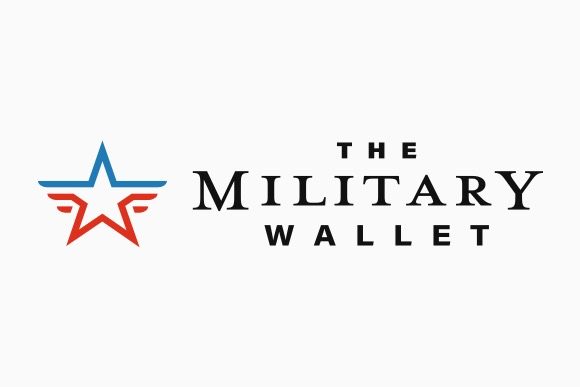If you’re a current or former member of the US military, you have access to some of the very best education and education assistance programs in the country.
There are many different programs, both for those on active duty and honorably discharged veterans.
That will give you the ability to participate in the program that will work best for you, at whatever stage of life you’re in.
Table of Contents
Education in the Military
The military provides various levels of education, ranging from basic training to advanced education opportunities.
Basic Training

Exactly what it will involve and how long it will last will depend on the branch of service, as well as what job you’ll be doing in the military.
Length and location of basic training are as follows:
- Army – Basic Combat Training, or BCT, lasts for ten weeks. Training locations are in
- Fort Benning in Columbus, Georgia;
- Fort Jackson in Columbia, South Carolina;
- Fort Leonard Wood in St. Robert, Missouri; and
- Fort Sill in Lawton, Oklahoma.
- Navy – lasts for seven weeks, plus one processing week. Training takes place at the Great Lakes Naval Training Center, in Great Lakes, IL, on the western shore of Lake Michigan.
- Air Force – lasts for seven weeks, plus an additional week of in-processing. Training takes place at Lackland Air Force Base in San Antonio, TX.
- Marines – lasts for 12 weeks. Training locations are in Parris Island, SC and San Diego, CA.
- Coast Guard – lasts for 7 ½ weeks, and takes place in Cape May, NJ.
New servicemembers typically go directly from their Basic Training course to another training course where they will learn to do their military job. This next phase of training goes by the name Tech School, AIT, A School, or MOS School, depending on the branch of service.
Tech School – Learning Your Military Specialty
After completing Basic Training, new military members must learn to perform their military duties. This often involves advanced technical training in new skills.
These schools include the Army’s Advanced Individual Training (AIT), the Navy’s “A” school, Air Force Technical Training (Tech School), the Marine Corps’ Military Occupational Specialty (MOS) school, and the Coast Guard “A” school.
Each trains members of the service for specific jobs within that branch.
For example, AIT trains service members for fields in artillery, avionics, and advanced technology.
Navy A school provides training in hundreds of job specialties, such as aviation, information systems technology, intelligence, sonar, and traffic controller.
Air Force Technical Training provides training in administrative, mechanical and electronic careers, some of which can be applied toward college credit.
MOS trains recruits for ground and air combat, logistics and command. Coast Guard A training includes law enforcement, technology, environmental operations, and maritime patrols.
Technical Training can last anywhere from one month to over a year. But most tech school courses are in the 2-6 month range.
Professional Military Training (PME)
PME offers additional training and continuing education that enables service members to advance in their military careers. It’s the training level where the military educates its leaders.
The specific training depends on the branch of service, as well as the in-service job of the member.
It’s especially valuable for service members planning permanent military careers, but much of the training can also help in preparation for civilian occupations.
PME usually happens at a career junction, and may be required to make rank. For example, in the Air Force, enlisted members are required to attend Airman Leadership School (ALS) prior to becoming a Non-Commissioned Officer (NCO). There is also the NCO Academy and Senior NCO Academy. Most military branches have similar schools within their ranks.
Officers may also have PME and leadership school requirements. The Air Force has Squadron Officer School (SOS), Air Command and Staff College (ACSC), and Air War College (AWC). The other military branches have similar officer PME requirements and opportunities.
Some of these schools may also award an advanced degree.
Advanced Education Opportunities
These refer to the financial assistance provided by each branch of the military enabling service members and reservists to attend college to earn degrees.
We’ll be discussing those programs going forward, and you can also check out our list of free on-base training you have access to.
Military Tuition Assistance Programs
Many people list education benefits as one of the main reasons they join the military. This was certainly the case for me as well. I used military education benefits to take classes on active duty and earn my bachelor’s degree.
The best part? I didn’t have to pay for it.
Military Tuition Assistance provides benefits for up to 100% of tuition expenses for eligible members of the Air Force, Army, Marine Corps, Navy, and Coast Guard. The benefits are similar for each branch, though each may have its own specific eligibility criteria and application process, as well as unique restrictions.
College cost coverage includes tuition, but cannot be used to cover other college fees (such as books, alb fees, technology fees, etc.).
For each branch of service, Military Tuition Assistance pays 100% of tuition, subject to the following limits for the Air Force, Army, Marine Corps, Navy, and Coast Guard:
- $250 per semester hour (maximum of 16 hours per year for Army)
- $166 per quarter hour
- $4,500 per fiscal year ($2,250 per fiscal year for the Coast Guard)
Eligibility varies by service. Assistance is available to various service levels based on branch:
- Air Force Tuition Assistance – active duty and Reserves
- Army Tuition Assistance – active duty, Reserves, and ARNG on active duty
- Marines Tuition Assistance – active duty only
- Navy Tuition Assistance – active duty and Reserves in active duty status
- Coast Guard Tuition Assistance – active duty and Reserves in active duty status
Note: Each branch may have a limited amount of funds available during the fiscal year. Funds are often granted on a first-come, first-served basis. So it’s a good idea to schedule classes early in the fiscal year to take advantage of these benefits, and have a backup plan for paying for your classes if Tuition Assistance funds run out during the year.
If Military Tuition Assistance is insufficient to cover your college costs, you can use the GI Bill “top up” to cover excess costs.
Military Tuition Assistance Limitations
There are some important restrictions to be aware of with regard to Military Tuition Assistance:
- You must apply for assistance at least seven days before classes begin (up to a maximum of 45 days before).
- If you fail a class, you must reimburse the service for the amount of assistance provided.
- Assistance is limited to a higher degree. For example, if you already have a bachelor’s degree, assistance will not be available for the pursuit of a second bachelor’s degree or an Associate’s degree. However, you would be able to use it to pursue a Master’s Degree.
- To maintain continued assistance, you must maintain a minimum grade point average of 2.0 for undergraduate, and 3.0 for graduate work.
Tuition Assistance Can Be Used to Test out of Classes
The program can also be used to cover college-related exams, such as the GRE, GMAT, SAT, and ACT. It will also cover the cost for College Level Examination Program (CLEP), that will allow you to test out of certain courses. Coverage extends to the Defense Activity for Non-Traditional Education Support (DANTES).
Here are some tips on how to test out of college-level classes.
Note: This tuition assistance does not repay or forgive student loans.
GI Bill
The GI Bill is a program providing education assistance to both active duty and separated military service people. It has several different variations.
Montgomery GI Bill (MGIB)
The Montgomery GI Bill (MGIB) provides education benefits to active service members, up to 10 years after your last separation from active duty.
Military members are given the ability to buy into the program for $1,200 during basic training.
But it provides a monthly stipend while you are attending classes at a qualified school. Payments are sent directly to you while you are attending. The funds can be used for tuition assistance and school-related fees.
For the current fiscal year, you can receive up to $1,994 per month if you’re attending school on a full-time basis (lower amounts are available for less than full-time attendance).
There are different benefit amounts, so you’ll need to check with the VA to determine exactly how much you’ll receive each month.
MGIB benefits expire 10 years after you separate from the military. Members may be eligible for a MGIB refund in limited circumstances.
Post-9/11 GI Bill
The Post-9/11 GI Bill is a version of the GI Bill that’s available for veterans or active duty service members who have served at least 30 days since September 10, 2001. It works with a tiered eligibility percentage based on time in service, and can range from 40% to 100% of the maximum benefit.
Funds can be used to pay all tuition and fees for an in-state college. Students who attend private or foreign schools can receive a maximum of $23,671.94 per academic year.
You can also receive a monthly housing allowance based on the location of the school you’re attending.
The Post-9/11 GI Bill benefit can be transferred to the servicemember’s dependents if they meet eligibility criteria and agree to serve an additional four years in the military.
Post-9/11 GI Bill benefits expire 15 years after you leave the military, unless you qualify for the Forever GI Bill.
Forever GI Bill
The Forever GI Bill, more formally known as the Harry W Colmery Veterans Education Assistance Act, and is largely designed to enhance or expand education benefits for veterans, servicemembers, families, and survivors.
For example, it enables Purple Heart recipients (awarded after September 11, 2001) entitlement to Post-9/11 GI Bill benefits at the 100% level for up to 36 months.
It also eliminates the 15-year limitation on use of Post-9/11 GI Bill benefits for certain members.
Reserve GI Bill
More formally known as the Montgomery GI Bill – Selected Reserve, the program provides up to 36 months of education benefits to members of the Selected Reserves of the Army, Navy, Air Force, Marine Corps, and Coast Guard, and also extends to the Army National Guard and Air National Guard.
To be eligible, you must have signed a six-year obligation to serve after June 30, 1985, and completed your Initial Active Duty for Training (IADT).
You must also have achieved your high school diploma or general equivalency diploma before you completed IADT training, and are in good standing in a drilling Selected Reserve unit.
Under the program, you can receive a monthly reimbursement of up to $1.595.20 as a full-time student.
Vocational Rehabilitation
The Vocational Rehabilitation and Employment (VR&E) program is for active duty service members and veterans, to provide services to help with job training, employment accommodations, resume development and job seeking skills coaching.
Basically, it’s to assist servicemembers and veterans with service-connected disabilities to help them prepare for, obtain, and maintain suitable employment or achieve independence in daily living.
It’s also available for those looking to start their own businesses, or who need independent living services if they are severely disabled and unable to work in a traditional employment environment.
Other Education Programs
The Veterans Administration provides the Veterans’ Educational Assistance Program (VEAP) that enables active duty military members and veterans to get matching tuition assistance from the program.
The program is limited to those who entered service for the first time between January 1, 1977, and June 30, 1985, and put money into a VEAP account before April 1, 1987 (between $25 and $2,700).
They must also have finished their first period of service, and have not received a dishonorable discharge.
Education assistance is based on a $2 to $1 government match program. For example, if you contributed $2,000, you’ll be eligible for assistance of $4,000.
The program is available for training programs, such as co-op training, technical or vocational courses, flight training, on-the-job training and apprenticeships, test fees, and entrepreneurship and correspondence training, as well as undergraduate and graduate degree programs.
Military Scholarships & Grants
The online magazine, U.S. Veterans Magazine, lists scores of scholarship and grant programs available to veterans and their spouses and families.
For example, the AFCEA Educational Fund provides $2,000 to students pursuing an undergraduate or graduate degree while employed in a science or technology discipline directly related to the mission of the agency.
The Marine Corps Law Enforcement Foundation provides assistance to children of Marines or federal law enforcement personnel who were killed on duty or died under extraordinary circumstances at home or abroad.
These are just two of the programs that are available. You should scroll through the many listed and check out any that may apply to your educational endeavors.
Tuition Assistance for Spouses
With all the educational assistance programs provided for active-duty military personnel and veterans, the military hasn’t forgotten about spouses.
The My Career Advancement Account (MyCAA) is a scholarship program that provides up to $4,000 in financial assistance (up to $2,000 per year for two years) to eligible military spouses.
However, there are annual waivers available for licensure and certificate programs if there is an upfront tuition cost over $2,000. It’s a workforce development program for spouses who are pursuing a license, certification or even an Associate’s degree in a portable career field and occupation.
The program is available to spouses of service members who are on active duty, and in pay grades E-1 to E-5, W-1 and W-2, and O-1 and O-2.
The spouse must also have successfully completed high school and have the ability to request tuition assistance while their military sponsor is on Title 10 military orders.
It’s also available to spouses married to members of both the National Guard and reserves in the same pay grades.
The program is also available for reimbursement for costs associated with obtaining or maintaining a professional license, including continuing education credits.
Speaking of professional licenses, the military has an additional professional license reimbursement program.
The Army and Air Force are reimbursing spouses for up to $500 for professional credentials or licensing fees required when they must relocate to a new state as part of a military move.
The Navy and Marine Corps have not yet announced participation in the plan, but are required to do so by law.
Eligible expenses can be reimbursed within 24 months of the military member’s orders being authenticated.
Final Thoughts on Military Education
In this article, we’ve covered the most common military education benefits, and you should investigate any that may apply to your situation.
You should also inquire into lesser-known benefit programs that may be available on a more limited basis, and read up on where you can store away benefits on your own, such as Coverdell education saving accounts or 529 plans.
Just be aware that each program is subject to availability. As discussed under some of the programs above, funding runs on an annual basis, and when it runs out, the programs are no longer available.
Others work on a first-come, first-served basis, which will limit the number of people who can participate.
But if one plan is not available, investigate an alternative.




About the comments on this site:
These responses are not provided or commissioned by the bank advertiser. Responses have not been reviewed, approved or otherwise endorsed by the bank advertiser. It is not the bank advertiser’s responsibility to ensure all posts and/or questions are answered.